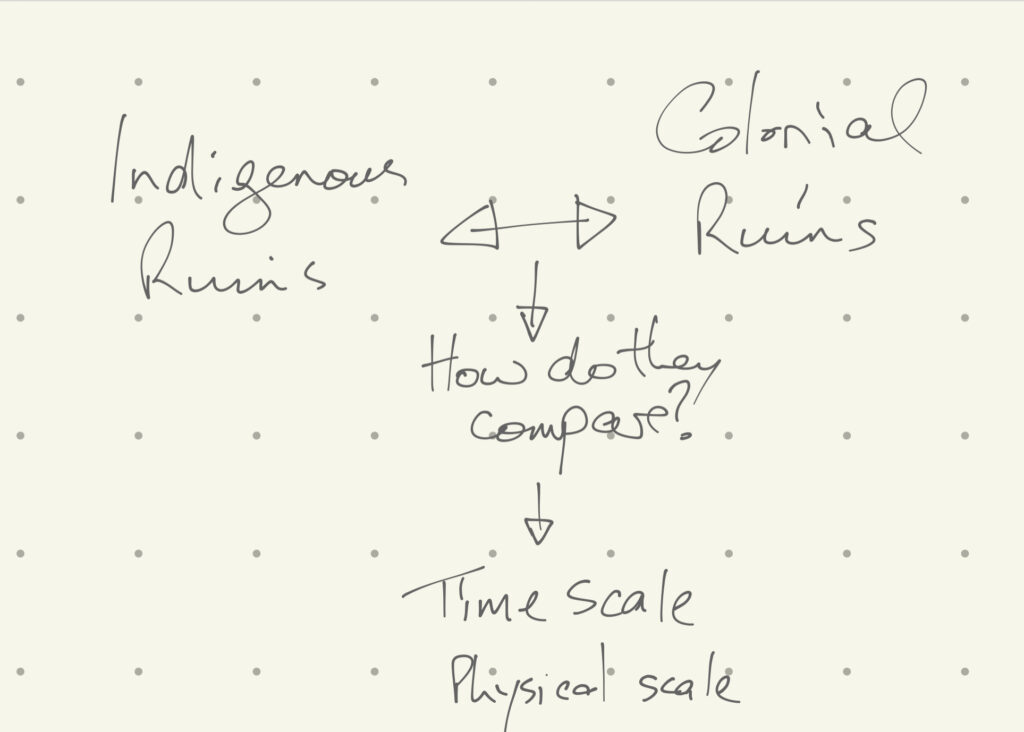Ruins
From ‘Ruins’, Edited by Brian Dillon
Ruins of memory
Notes from Rebecca Solnit (p150-152)
- Ruins stand as reminders
- Memory is always incomplete falling into ruin, but the ruins themselves, like traces, are treasures
- Ruins are links to what came before
- Our guide to situating ourselves in a landscape of time
- To erase the ruins is to erase the visible public triggers of memory
- the USA is rich in ruins, though not always as imagined – it is without a past only in the sense that it does not own it’s past, or own up to it (p151)
My notes/questions arising from Solnit
- Is a landscape or place without ruins a place without a past?
- What classifies as a ruin?
- Colonial Australia has a history of not recognising ruins outside of its own narrow view of the world
- It is becoming clearer is that ruins/traces of Australia’s indigenous culture are very much present, however it was not recognised or acknowledged by colonial Australia. Worst still these traces or evidence these traces when recognised were often either ignored or destroyed
- The indigenous traces did not fit the colonial narrative that no civilised society was present


No Comments